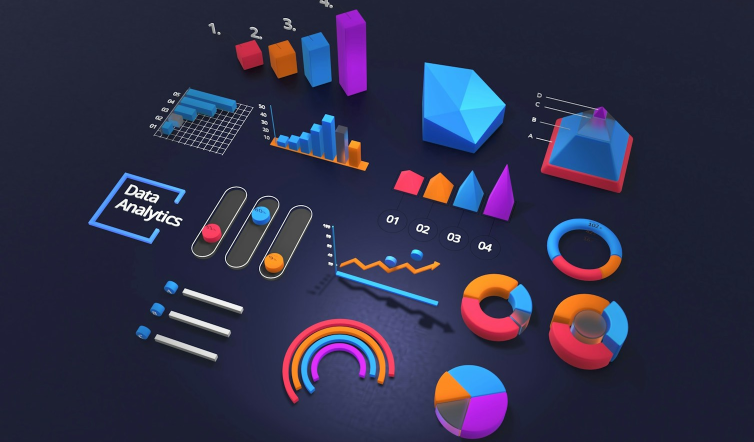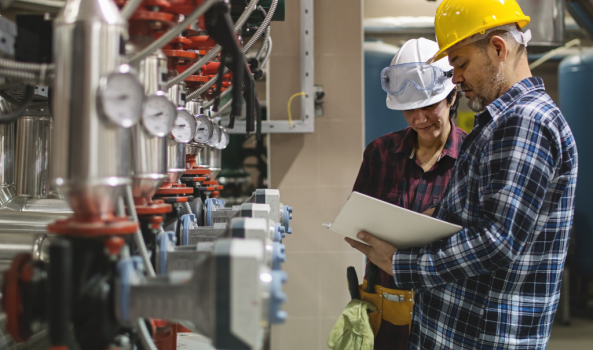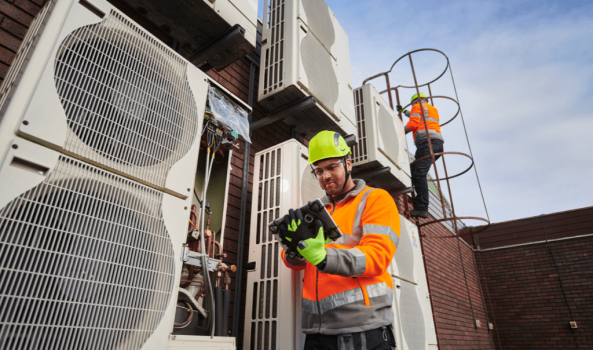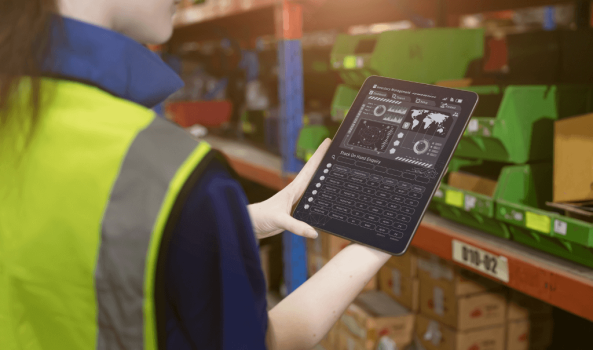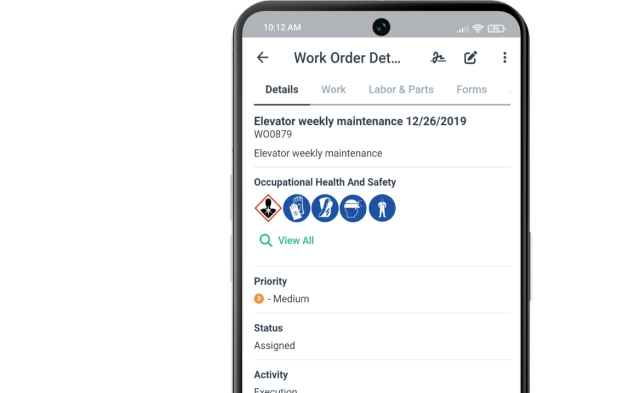Get a Free WorkTrek Demo
Let's show you how WorkTrek can help you optimize your maintenance operation.
Try for freeKey Takeaways:
- 75% of organizations are maintaining or expanding maintenance budgets in 2024, reflecting the critical importance of strategic maintenance management
- Unscheduled downtime costs Fortune Global 500 companies 11% of their yearly turnover—a total of $1.4 trillion, up from $864 billion in 2019-20
- The global predictive maintenance market grew to $5.5 billion in 2022 with an estimated CAGR of 17% until 2028
- Predictive maintenance can yield cost savings between 8% to 12% over preventive maintenance, and up to 40% over reactive maintenance
When equipment breaks down unexpectedly, it can not only stop production but also affect the bottom line.
Yet many organizations still approach maintenance as a reactive afterthought rather than a strategic business function.
This mindset can be costly, inefficient, and ultimately unsustainable in today’s competitive landscape.
In this guide, we’ll explore the key maintenance management objectives that drive successful organizations, examine why they matter, and show you how to implement them effectively using modern tools and strategies.
The Core Objectives of Maintenance Management
1. Maximize Asset Reliability and Availability
As a maintenance manager, your goal is to maximize asset reliability and availability. The goal for any maintenance department is to keep equipment operating reliably to meet customer demands.
The proper maintenance management goal is to ensure that assets perform their intended functions without failures.
According to UpKeep’s 2024 State of Maintenance Report, 65% of maintenance professionals now utilize CMMS for tracking their maintenance programs, representing a significant shift toward data-driven reliability management.
Companies with strong reliability programs experience 30% fewer equipment failures and 25% higher overall operational efficiency compared to those with reactive approaches.
Implementing comprehensive preventive maintenance programs can pave the path to better asset reliability.
2. Minimize Unplanned Downtime
Let’s not beat around the bush; unplanned downtime is the most expensive consequence of poor maintenance management.
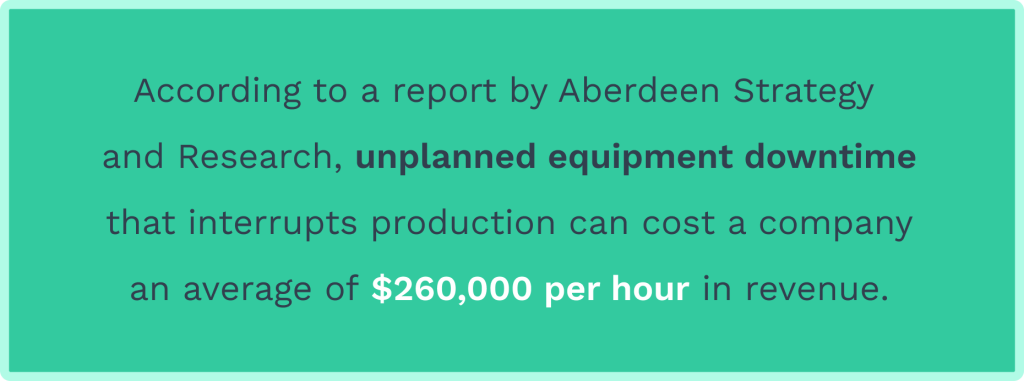
When a production line stops unexpectedly, it can affect operational costs and not just repair expenses.
According to Siemens’ True Cost of Downtime 2024 report, in the automotive industry, the per-hour cost of unplanned downtime is $2.3 million, or a whopping $600 a second. The average large plant loses 27 hours per month to unplanned downtime, though this is an improvement from 39 hours in 2019.

The 2024 Limble Maintenance Report reveals that 51% of maintenance professionals agree that downtime is one of their top three most significant challenges.
Additionally, TeamSense research shows the average manufacturer faces 800 hours of unplanned machine maintenance and downtime per year.
In order to minimize unplanned downtime, maintenance organizations need a multifaceted approach. This plan should include predictive maintenance technologies, preventive maintenance scheduling, and rapid response capabilities.
According to WorkTrek’s analysis, 67% of manufacturing companies now use preventive maintenance as their top strategy for preventing downtime.
3. Control and Optimize Maintenance Costs
With shrinking budgets, controlling costs has become a top priority for most maintenance management teams.
Cost reduction is always a cornerstone of most maintenance management functions.
However, there is a balance between cost control, improved asset reliability, and a reduction in equipment failures.
Most successful organizations implement comprehensive maintenance cost tracking that is more than just tracking labor and parts expenses.
Monitoring indirect costs like energy consumption, production losses, and quality impacts to get a complete picture of maintenance effectiveness.
One approach to reduce costs is to implement a preventive maintenance program. Advanced Technology Services (ATS) research shows that recent cost analysis demonstrates savings of 18% to 25% in maintenance expenditures through predictive maintenance. The US Department of Energy estimates that a predictive maintenance program could realize 30% to 40% savings depending on the facility.
Additionally, according to Deloitte research, predictive maintenance can reduce maintenance costs by up to 25% and reduce unplanned downtime by up to 50%.
So the solution to control and optimize maintenance costs is to move away from corrective maintenance and towards predictive maintenance.
4. Ensure Safety and Regulatory Compliance
In a maintenance organization, safety is a non-negotiable objective.
Proper maintenance directly impacts worker safety, environmental protection, and regulatory compliance.
Some equipment failures can create hazardous conditions, while inadequate maintenance can lead to safety violations and costly penalties.
According to Berg Environmental Services analysis, fatal workplace injuries rose 5.7% in 2022, with injury and illness cases up 7.5% from the previous year. This underscores the critical importance of safety-focused maintenance programs.
The 2024 Limble State of Maintenance Report shows that manufacturing companies rely primarily on staff training and culture as their most common strategies to ensure compliance.
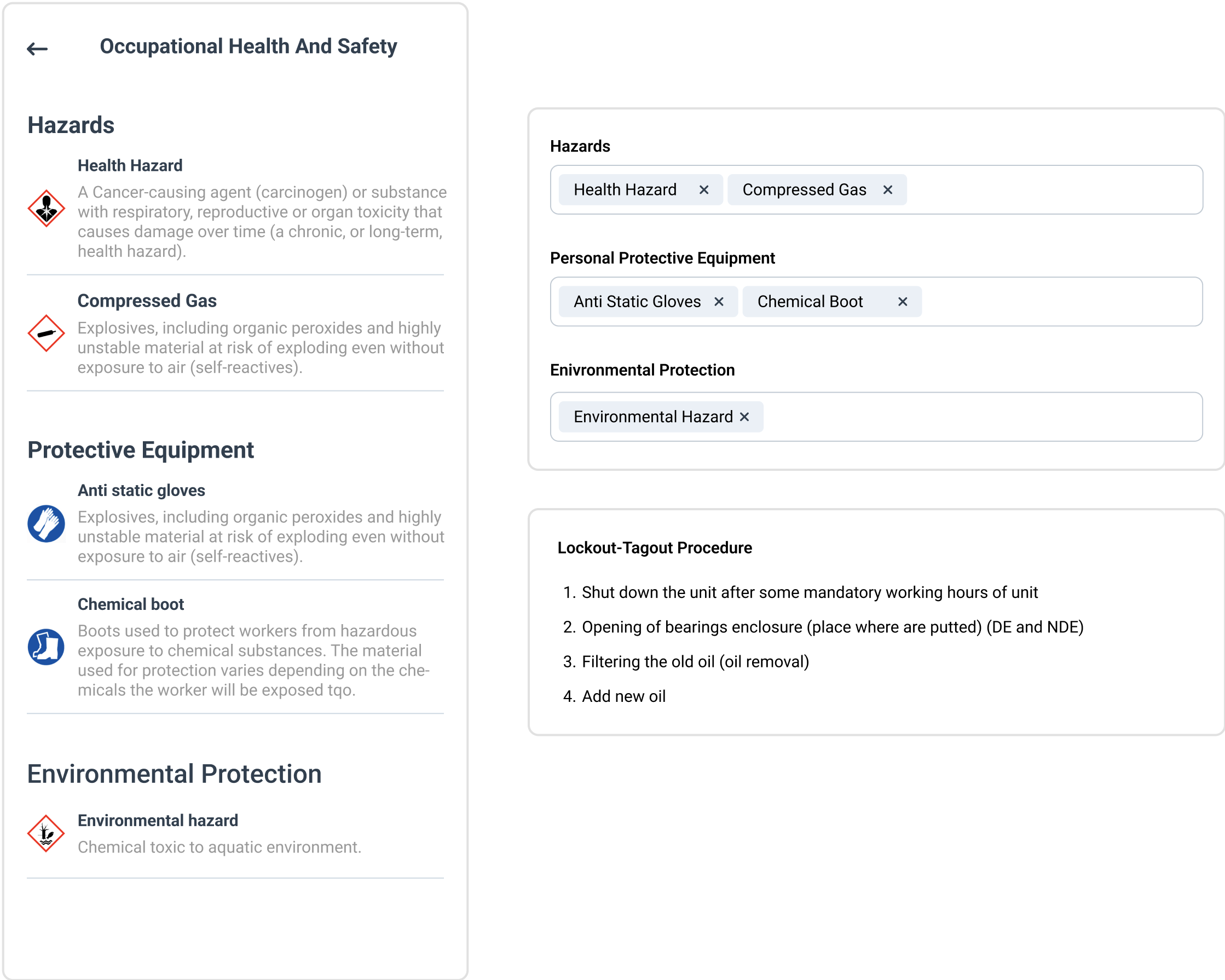
Some of the key regulatory requirements include:
- OSHA Standards: According to A.R. Mazzotta, lockout/tagout (LOTO) violations are among the most cited by OSHA, highlighting the need for comprehensive energy control programs
- Environmental Regulations: GAN Integrity reports that companies must navigate compliance requirements across environmental, social, and governance (ESG) standards
- Industry-Specific Requirements: The Current Good Manufacturing Practice (CGMP) requirements establish standards for pharmaceutical manufacturing
Successful organizations that excel in safety and compliance typically integrate these requirements into their standard maintenance procedures.
Additionally, some leading companies follow ISO 45001, the internationally recognized standard for managing occupational health and safety risks.
5. Extend Asset Life and Optimize Performance
Maintenance managers strive to extend asset longevity and make sure the company’s assets are performing at optimal efficiency.
The goal is to reduce equipment failures and replacements during the entire equipment lifecycle, since that can be costly for the organization as a whole.
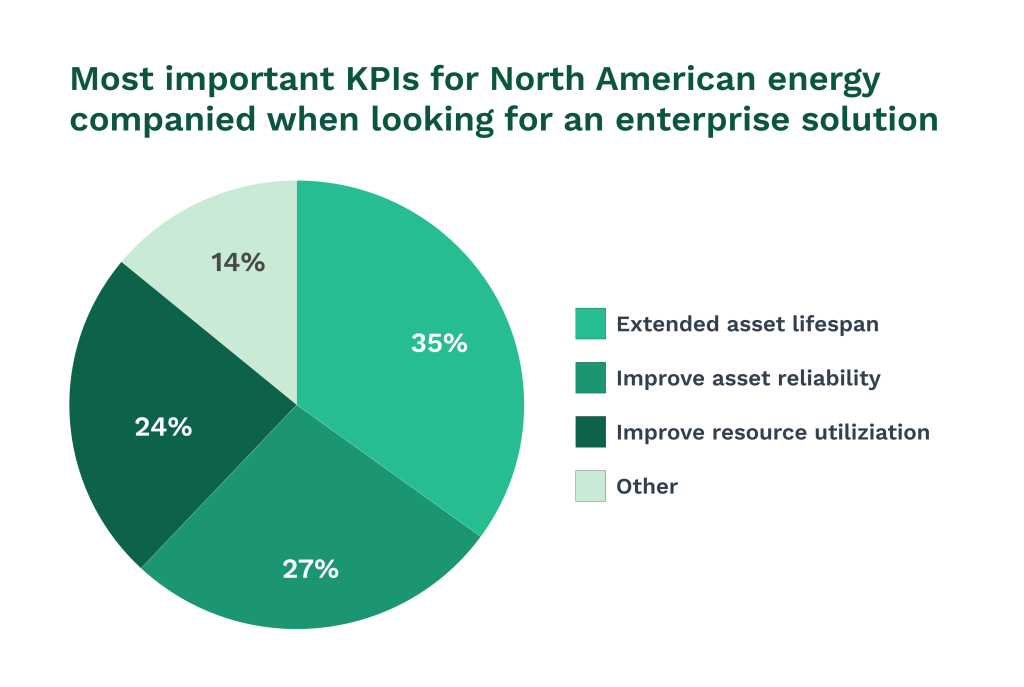
One approach to improve asset life is to implement a monitoring program.
According to OxMaint’s ROI analysis, by continuously monitoring asset health and performing targeted interventions, predictive maintenance can extend equipment lifespan by 20-40%. This extension provides substantial value by deferring capital replacement costs and maximizing the return on asset investments.
Additionally, according to Infraspeak’s 2025 maintenance trends report notes that 67% of maintenance managers believe the main challenge they face in the future is aging equipment.
However, modern approaches offer solutions: Proactive maintenance has taken center stage as the primary strategy for addressing aging assets.
A successful asset life optimization typically involves implementing condition-based maintenance programs that monitor actual asset health rather than relying solely on time-based schedules.

This approach enables maintenance teams to intervene at the optimal time, before a failure occurs.
Implementation of Maintenance Objectives
Developing a Comprehensive Maintenance Program
Developing an effective maintenance program requires careful planning and a systematic approach.
The 2024 MaintainX State of Industrial Maintenance Report highlights the complex landscape facing maintenance teams.
The first step involves cataloging all assets and assessing their criticality to business operations. You cannot get started if you skip this step.
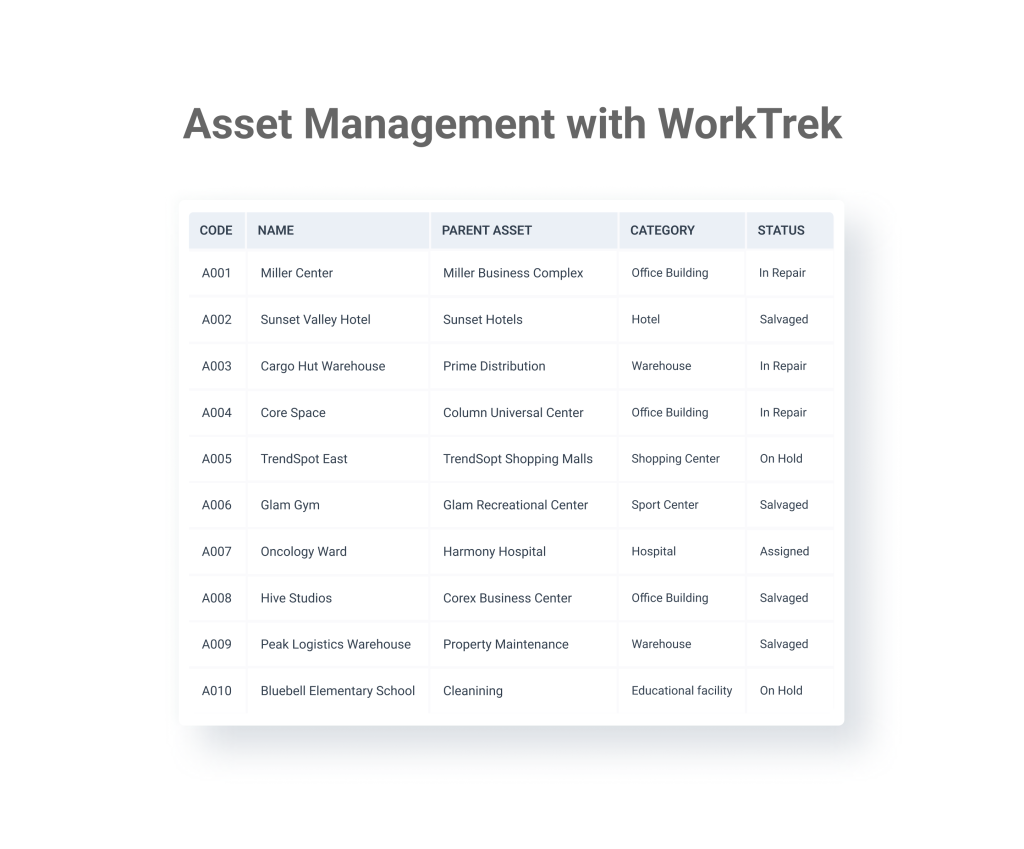
This asset tracking process helps prioritize maintenance efforts and can help you allocate resources where they’ll have the greatest impact.
Critical assets that directly affect production or safety should receive the highest priority for preventive maintenance and monitoring.
This is also one of the first steps if you plan on implementing maintenance management software.
Integrating Technology and Data Analytics
Modern maintenance management depends on technology to achieve its objectives efficiently and effectively.
Based on the Elara Digital’s 2024 analysis, the global inspection, repair, and maintenance market grew from $42.66 billion in 2022 and is expected to reach $72.46 billion by 2029.
Financesonline.com‘s latest maintenance statistics report that 66% of maintenance professionals from various industries say they use CMMS to track their maintenance program. This is a 24% increase from 2019.
This surge suggests that events from the past few years, including COVID-19, have accelerated digital transformation in the maintenance sector.
Advanced technologies are transforming the landscape:
- IoT Integration: Worldwide spending on IoT technology reached $1.2 trillion in 2022 with a CAGR of 13.6%, according to UpKeep research
- Digital Twins: The digital twin market analysis by Marketresearch.com shows the market valued at $21.1 billion in 2024 is projected to reach $119.8 billion by 2029, growing at a CAGR of 41.6%
- Predictive Analytics: IoT Analytics reports that search interest in predictive maintenance has grown nearly threefold since 2017
Building an Effective Maintenance Team
The best way to achieve your maintenance objectives is to have a team that understands both technical and strategic business goals of the organization.
This means investing in training programs that develop both technical competencies and business awareness among maintenance staff.
There is an upward trend in employment growth in maintenance organizations. According to the U.S. Bureau of Labor Statistics, the U.S. employs over 1.3 million general maintenance workers, with employment expected to grow by 4% by 2029.
The manufacturing industry pays the highest median annual salary ($47,580) to maintenance workers.
A well-balanced maintenance team typically includes a mix of specialists and generalists who can handle both routine and complex tasks.
The team structure should support both planned maintenance activities and rapid response to unexpected issues. This could be a mix of full-time employees and contractors.
Also, don’t forget that communication and collaboration are key elements of successful maintenance teams.
Maintenance managers need clear channels for sharing information about equipment status, upcoming maintenance tasks, and priority issues.
You can greatly simplify communication and work tracking between team members by implementing a CMMS system like WorkTrek.
Key Performance Indicators for Maintenance Objectives
Measuring Asset Reliability and Performance
What is the best way to track if your maintenance management process is working? Establish Key Performance Indicators (KPIs) and track them very closely.
The metrics you select should directly relate to the stated objectives and provide actionable information for continuous improvement.
For asset reliability, important metrics include Mean Time Between Failures (MTBF), Overall Equipment Effectiveness (OEE), and equipment availability percentages.
These indicators help maintenance managers understand how well equipment is performing and, more importantly, identify opportunities for improvement.
According to Sensemore’s analysis, maintenance managers should also track leading indicators that predict future performance rather than just reporting past results.
Metrics like planned maintenance compliance rates, condition monitoring alerts, and maintenance backlog levels provide early warning of potential issues.
Consider establishing a reporting dashboard that provides real-time visibility into key metrics. These dashboards help maintenance managers identify trends, spot emerging issues, and make timely adjustments to maintenance strategies.
Cost Control and Financial Metrics
Another set of KPIs to implement and review regularly are financial performance indicators.
These indicators can demonstrate the business value of maintenance programs. This ensures that cost control objectives are met.
Key metrics include maintenance cost per unit of production, maintenance cost as a percentage of replacement asset value, and emergency repair costs as a percentage of total maintenance spending.
Neuroject’s 2024 analysis emphasizes that these financial metrics should be tracked over time to identify trends and measure improvement.
Organizations should also benchmark their performance against industry standards to understand their relative position and identify opportunities for improvement.
One of the most important matrices to track is return on investment (ROI) calculations. This will help you justify spending on new technologies and programs to track their effectiveness.
According to Factory AI’s ROI calculator, past studies reported by the US Department of Energy have estimated that predictive maintenance programs can achieve an ROI of 10 times the investment.
Performing regular financial analysis of maintenance programs can help ensure that spending aligns with business priorities.
At the end of the day, as a maintenance manager, you want to deliver measurable value to the organization.
Tools and Technologies for Achieving Maintenance Objectives
Computerized Maintenance Management Systems (CMMS)
Implementing a computerized maintenance management system like WorkTrek serves as the foundation for achieving maintenance management objectives
According to Financesonline.com‘s research, modern CMMS solutions offer comprehensive functionality that covers all aspects of maintenance management.
For example, WorkTrek CMMS provides organizations with the tools and capabilities necessary to achieve all key maintenance management objectives through a unified, integrated platform.
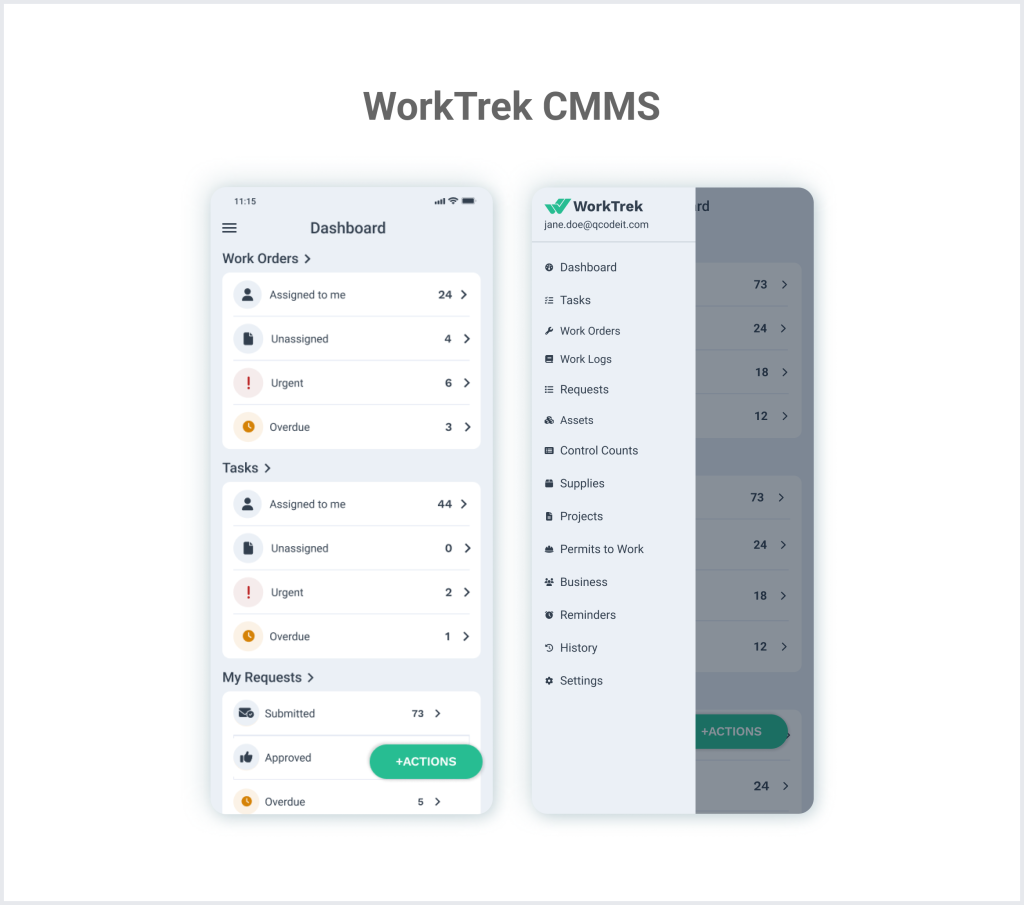
WorkTrek’s built-in analytics capabilities transform maintenance data into actionable insights that support continuous improvement and objective achievement.
The platform provides several pre-built reports and more than 20 key performance indicators that help maintenance managers monitor progress toward their objectives.
Real-time dashboards provide immediate visibility into critical metrics, including equipment availability, maintenance backlog, cost trends, and safety performance. These dashboards help maintenance managers identify emerging issues and make timely adjustments to maintain performance.
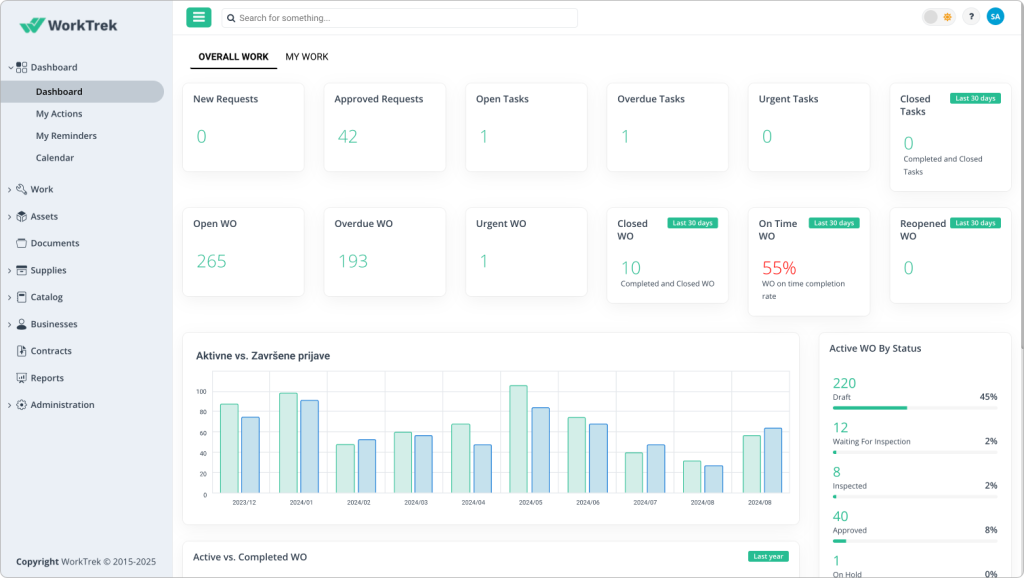
Inventory management is another strength of a CMMS platform. These systems can track parts usage patterns, automatically generate purchase orders when inventory levels fall below predetermined thresholds, and help identify opportunities to standardize parts across similar equipment.
Predictive Maintenance Technologies
Predictive maintenance is the next generation of how organizations can optimize their maintenance management process. This can also help minimize downtime and optimize maintenance costs.
According to Simio’s Industry 4.0 analysis, these technologies use real-time monitoring and data analytics to predict when equipment failures are likely to occur.
Condition monitoring sensors can track various parameters, including vibration, temperature, pressure, and electrical characteristics.
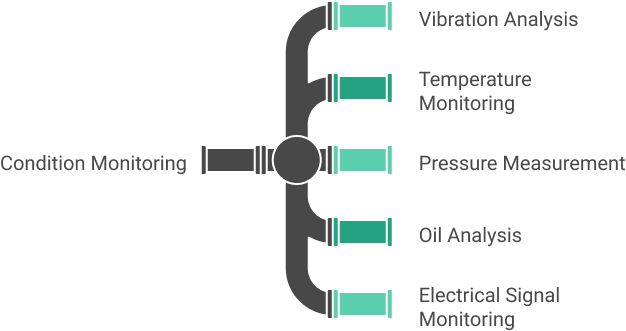
Advanced analytics software analyzes this data to identify patterns that indicate developing problems, often weeks or months before traditional symptoms become apparent.
Springer’s research on digital twins shows that machine learning algorithms continue to improve prediction accuracy over time by learning from historical data and outcomes.
Predictive maintenance can be challenging to implement and requires careful planning and integration with existing maintenance processes.
Organizations should focus on selecting the appropriate monitoring technologies for their specific equipment types and operating conditions.
Mobile Maintenance Solutions
Mobile technology has revolutionized how maintenance teams operate. They help by providing real-time access to information and systems from anywhere in the facility.
Mobile maintenance solutions support multiple objectives by improving efficiency, reducing response times, and ensuring better data accuracy.
According to MDPI’s review of digital twin applications, maintenance technicians can access work orders, asset histories, and procedure documentation directly from mobile devices while working on equipment.
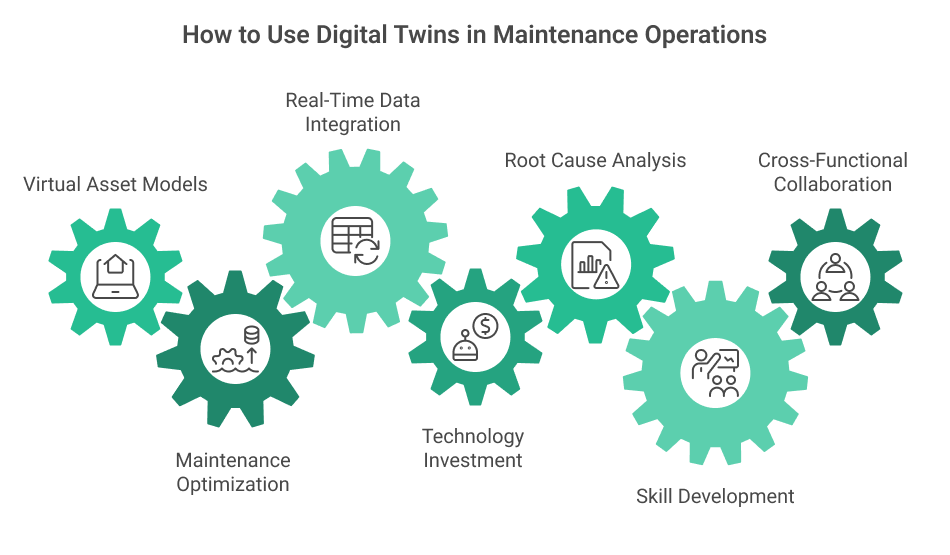
This immediate access to information helps them complete tasks more efficiently and reduces the likelihood of errors or delays.
Mobile reporting capabilities enable real-time updates on work completion, parts usage, and equipment condition.
This approach can improve accuracy and provide maintenance managers with current information for decision-making.
Many mobile maintenance solutions, such as WorkTrek CMMS, also include features like barcode scanning for asset identification, photo capture for documentation, and GPS tracking for resource management.
These capabilities can enhance the efficiency and effectiveness of maintenance operations.
Conclusion
The key objectives of maintenance management are to maximize asset reliability, minimize unplanned downtime, control costs, ensure safety and compliance, and optimize asset life.
Organizations that excel in these areas consistently outperform their peers in productivity, profitability, and customer satisfaction.
For a successful implementation, you need a commitment to strategic planning, investment in appropriate technologies, development of skilled personnel, and continuous improvement based on data analysis and performance measurement.
Modern tools like WorkTrek CMMS provide the capabilities necessary to achieve these objectives efficiently and effectively.
The future of maintenance management will continue to evolve as new technologies and business requirements create new opportunities and challenges.



